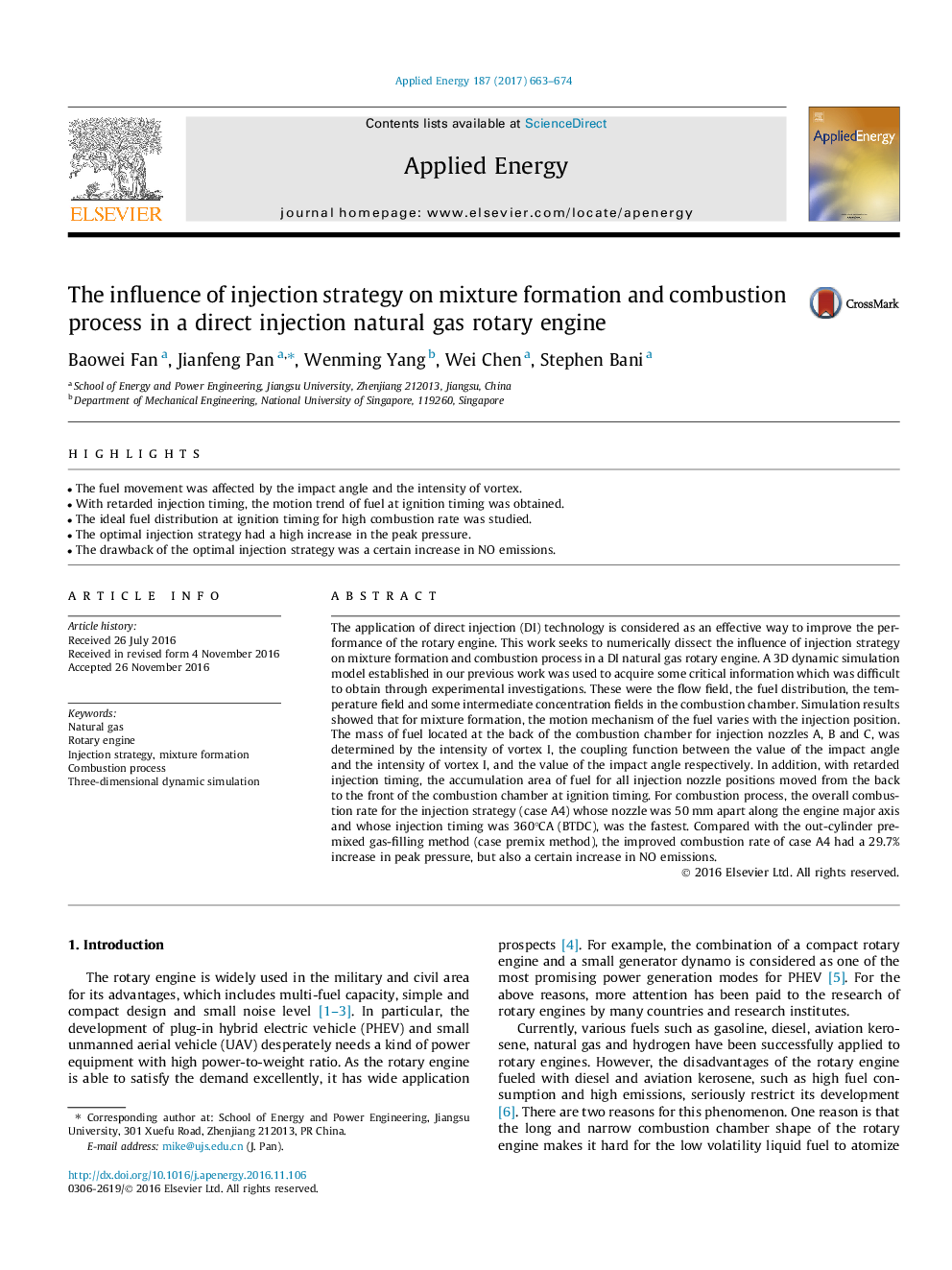| کد مقاله | کد نشریه | سال انتشار | مقاله انگلیسی | نسخه تمام متن |
|---|---|---|---|---|
| 4916708 | 1428103 | 2017 | 12 صفحه PDF | دانلود رایگان |
عنوان انگلیسی مقاله ISI
The influence of injection strategy on mixture formation and combustion process in a direct injection natural gas rotary engine
ترجمه فارسی عنوان
تاثیر استراتژی تزریق در شکل گیری مخلوط و فرایند احتراق در یک موتور دوار مستقیم گاز تزریق
دانلود مقاله + سفارش ترجمه
دانلود مقاله ISI انگلیسی
رایگان برای ایرانیان
کلمات کلیدی
گاز طبیعی، موتور روتاری استراتژی تزریق، ترکیب مخلوط، فرآیند احتراق شبیه سازی دینامیکی سه بعدی،
موضوعات مرتبط
مهندسی و علوم پایه
مهندسی انرژی
مهندسی انرژی و فناوری های برق
چکیده انگلیسی
The application of direct injection (DI) technology is considered as an effective way to improve the performance of the rotary engine. This work seeks to numerically dissect the influence of injection strategy on mixture formation and combustion process in a DI natural gas rotary engine. A 3D dynamic simulation model established in our previous work was used to acquire some critical information which was difficult to obtain through experimental investigations. These were the flow field, the fuel distribution, the temperature field and some intermediate concentration fields in the combustion chamber. Simulation results showed that for mixture formation, the motion mechanism of the fuel varies with the injection position. The mass of fuel located at the back of the combustion chamber for injection nozzles A, B and C, was determined by the intensity of vortex I, the coupling function between the value of the impact angle and the intensity of vortex I, and the value of the impact angle respectively. In addition, with retarded injection timing, the accumulation area of fuel for all injection nozzle positions moved from the back to the front of the combustion chamber at ignition timing. For combustion process, the overall combustion rate for the injection strategy (case A4) whose nozzle was 50 mm apart along the engine major axis and whose injection timing was 360°CA (BTDC), was the fastest. Compared with the out-cylinder premixed gas-filling method (case premix method), the improved combustion rate of case A4 had a 29.7% increase in peak pressure, but also a certain increase in NO emissions.
ناشر
Database: Elsevier - ScienceDirect (ساینس دایرکت)
Journal: Applied Energy - Volume 187, 1 February 2017, Pages 663-674
Journal: Applied Energy - Volume 187, 1 February 2017, Pages 663-674
نویسندگان
Baowei Fan, Jianfeng Pan, Wenming Yang, Wei Chen, Stephen Bani,
